|
Related FAQs: Marine Invertebrates,
Marine Invert.s
2, Marine Invert.s 3,
Non-Vert IDs 1, Non-Vert IDs 2, Non-Vert IDs 3, Non-Vert IDs 4, Non-Vert IDs 5, Non-Vert IDs 6, Non-Vert IDs 7, Non-Vert IDs 8, Non-Vert IDs 9, Non-Vert IDs 10, Non-Vert IDs11, Non-Vert IDs 12, Non-Vert IDs 13, Non-Vert IDs 14, Non-Vert IDs 15, Non-Vert IDs 16, Non-Vert IDs 17, Non-Vert IDs 18, Non-Vert. ID 19, Non-Vert. ID 20, Non-Vert. ID 21, Non-Vert. ID 25, Non-Vert ID 26, Non-Vert ID 27, Non-Vert ID 28, Non-Vert ID 29, Non-Vert ID 30 Non-Vert ID 31, Non-Vert ID 32, Non-Vert 33, Non-Vert ID 34, Non-Vert ID 35, Non-Vert ID 36, Non-Vert ID 37, Non-Vert ID 38, Non-Vert ID
39, Non-Vert ID 40,
Non-Vert ID 41, Non-Vert ID 42, & FAQs
about: Marine Invertebrate
Behavior, Marine
Invertebrate Compatibility, Marine Invertebrate Selection,
Marine Invertebrate
Systems, Feeding Reef
Invertebrates, Marine
Invertebrate Disease, Marine Invertebrate
Reproduction, & Quarantine of Corals and
Invertebrates, Feeding Reef Invertebrates,
Lighting Marine
Invertebrates, Marine
Plankton, Marine
Microbes, Marine Virus,
Marine Bacteria, Marine Funguses, Marine Protozoans, Marine Plankton, Live Rock,
Related Articles: Marine Virology, Marine Bacteria, Marine Mycology, Marine Protozoans, Invertebrates, Marine Plankton, Live
Rock, Live Sand, Sponges (Porifera), Stinging-Celled Animals (Cnidaria),
Worm Groups, Mollusks (Snails, Bivalves, Octopus...),
Pycnogonids (Sea Spiders),
Jointed-Legged
Animals (Arthropods), Bryozoans/Ectoprocts, Spiny-Skinned Animals
(Echinoderms), Water Flow, How Much
is Enough,
/The Conscientious Reef
Aquarist
The Pros & Cons of Hitchhikers
in the Reef Aquarium, part 4
To: Part 1,
Part 2, Part 3,
|
|
|
By Bob Fenner
|
|
 |
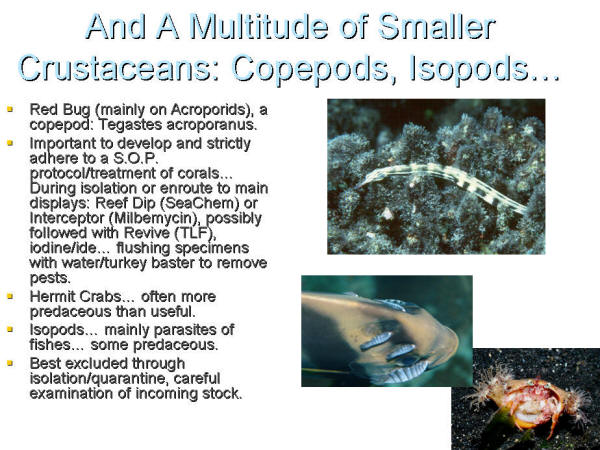 |
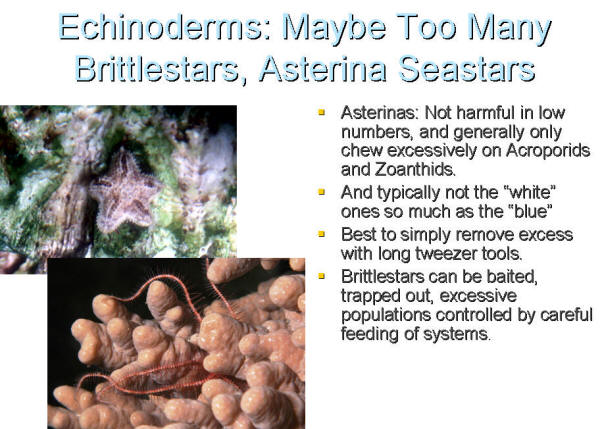 |
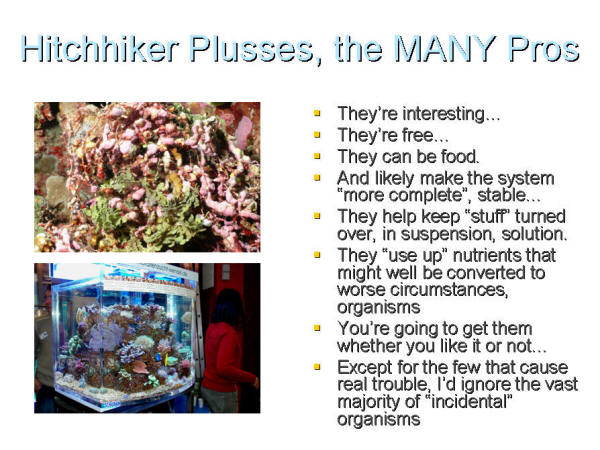 |
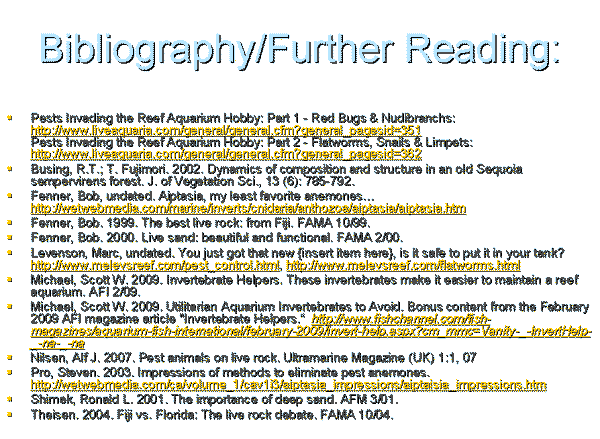 |
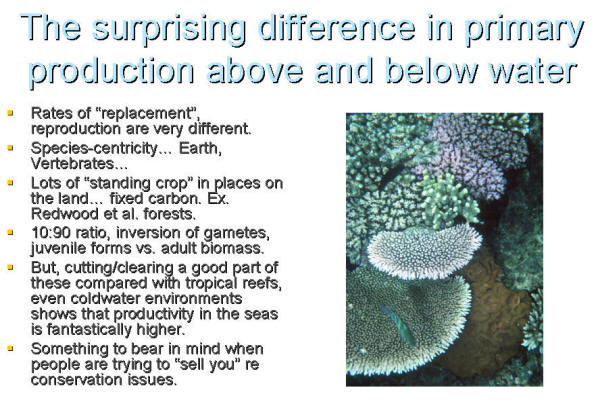 |
A "bonus" frame/cell I'm thinking of adding... if
there's time, deemed sufficient to be of interest. The
surprising reversed situation between what we are most collectively
familiar with as land organisms ourselves... That much of the
"fixed carbon" life about us is in the stages of adult,
developmental age... Whereas, the bulk of biota in the seas is in
the form of larvae, sex cells... Hence the profusion of
filter-feeding species, and their abundance.
Secondly the vast difference in replacement rates between land and
reef environments. Aquatic ones are far more robust and vigorous,
"bouncing back" and restructuring often in months at what
would take years on land.
The pertinence of this to aquarists? A few things... the likelihood
of miraculous rates of reproduction in pest organisms... and
secondly, the remarkable tenacity of the life in the frail,
changeable bits of water we call aquariums. |
To: Part 1, Part 2, Part
3,
|
|

